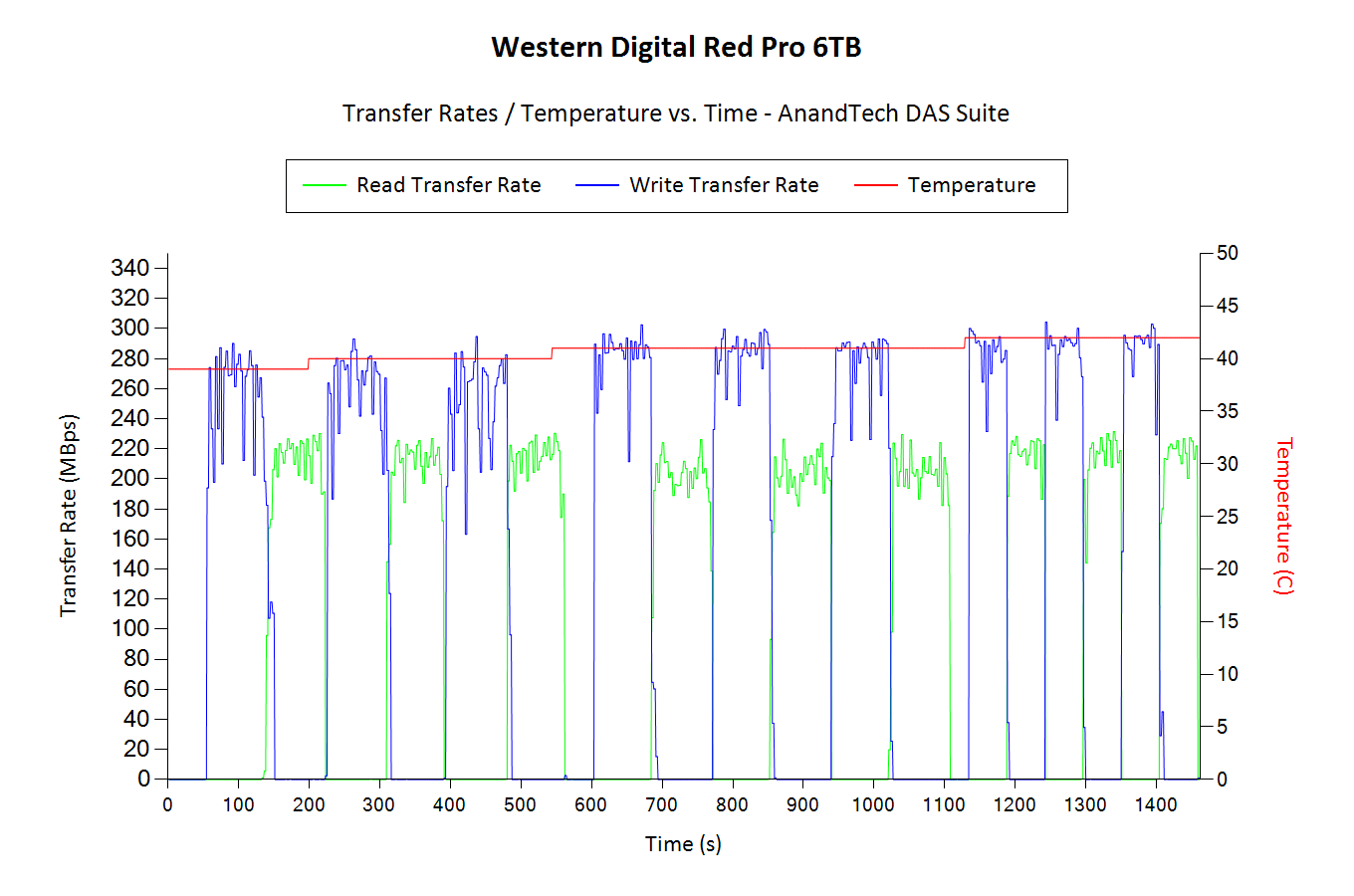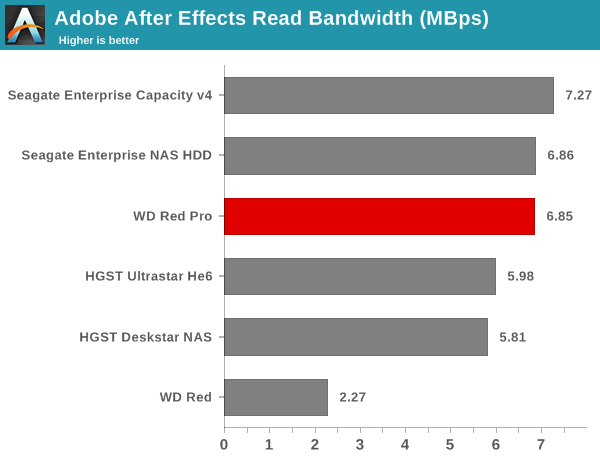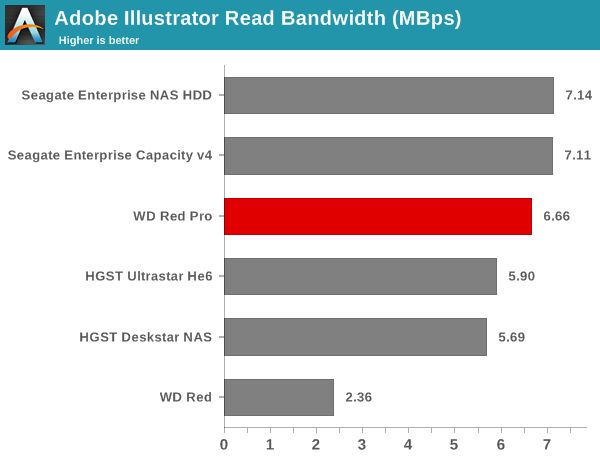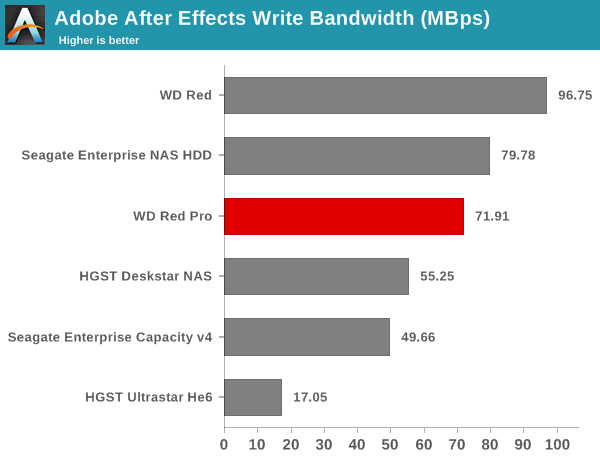WD Red Pro 6 TB Review - High Performance NAS HDD Gets a Capacity Bump
by Ganesh T S on September 7, 2015 8:00 AM EST- Posted in
- NAS
- Storage
- HDDs
- Western Digital
Single Client Access - DAS Benchmarks
The WD Red Pro was connected to a 6 Gbps SATA port off the PCH in our DAS testbed. After formatting in NTFS, it was subject to our DAS test suite. While processing our DAS suite, we also recorded the instantaneous transfer rates and temperature of the drive. Compared to other NAS drives at the same capacity point, write transfers show higher instantaneous speeds due to a combination of the firmware and the 128 MB cache inside the disk. However, sustained write rates are comparable to other 6TB drives. The temperature of the unit at the end of the transfers, despite being blow 45C, is higher than any of the other drives at the same capacity point.

The graphs below present the average transfer rates for the various workloads and how they compare against other HDDs of the same capacity that have been evaluated before.






PCMark 8 Storage Traces








In the real-life workloads, the caching behavior enables the WD Red Pro to score better than the competitors in almost all the write tests. Read scenarios show it coming in the middle of the pack.










62 Comments
View All Comments
Impulses - Tuesday, September 8, 2015 - link
My 75GB 75GXP failed slowly, I dunno if it was related to the main source of failure everyone was seeing... It made for some interesting surprises, like waking up to an empty Desktop because the directory had been mysteriously renamed Desotop (amazingly everything within was intact).MHz Tweaker - Wednesday, September 9, 2015 - link
Yes, I think I remember those GXP-Deathstars "click click clickety click"Samus - Monday, September 7, 2015 - link
I prefer HGST drives, but really just the older ones like the 2TB and 3TB 5400RPM Deskstar Coolspins. They were nearly as fast as most 7200RPM drives of the day.The He6 is just too expensive, although they seem to be very reliable and that was the real concern at the beginning for that technology.
And until recently, Hitachi/HGST didn't have a 6TB non-Helium model available. They are clearly behind Seagate and WD on density, but ahead of them on reliability. Sometimes keeping it old-school is the best path. Look at Mazda with Skyactive. No turbo charging, no fancy dual-clutch or CVT transmissions, just a modern lightweight engine with as much friction removed as possible mated to a tweaked slushbox and it still beats every single competitor in fuel economy, aside from Hybrids, while also being among the few vehicles manufactures that have not had transmission or engine related recalls.
Adul - Tuesday, September 8, 2015 - link
Not to mention taht they are great to drive cards :)Adul - Tuesday, September 8, 2015 - link
Cars! should not reply from phone.yeeeeman - Monday, September 7, 2015 - link
When do these ancient objects go extinct? And why didn't you include at least an ssd for comparison?damianrobertjones - Monday, September 7, 2015 - link
When you and I can afford to buy a 6TB SSD version. That probably means when we're dead.FunBunny2 - Monday, September 7, 2015 - link
I wonder if it's possible to stuff 6TB of NAND, at any node size, into 2.5" form factor?KateH - Monday, September 7, 2015 - link
Yes.http://arstechnica.com/gadgets/2015/08/samsung-unv...
FunBunny2 - Tuesday, September 8, 2015 - link
Zoweeeeee.